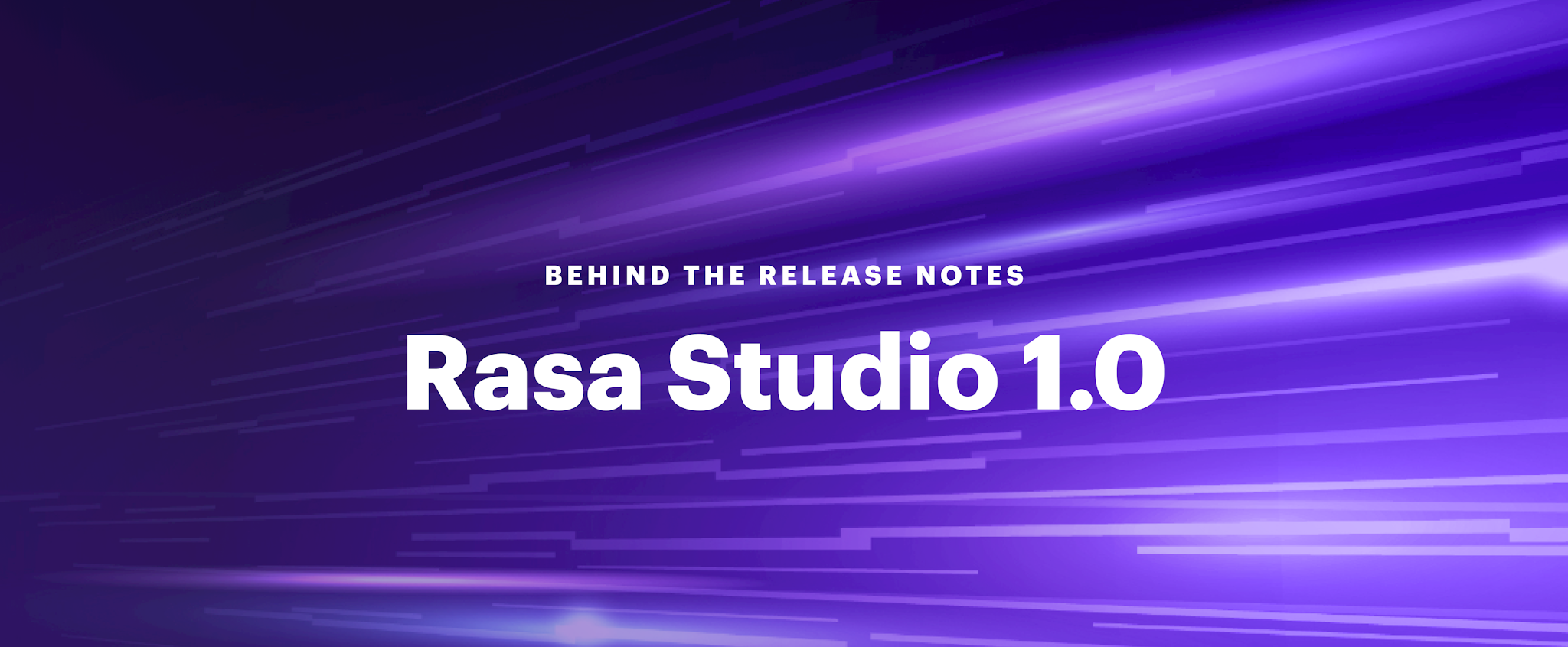Design and implementation teams in conversational AI projects have faced an impossible task: prepare to answer anything a user might say, in any order. This required complicated logic and careful design to disambiguate, digress, and direct users down a predefined path.
This changes today. With the introduction of Rasa Studio, developing excellent conversational customer experiences has never been easier or more effective. Rasa Studio is our no-code graphical user interface (UI) for business users to collaboratively build, test, tune, optimize, and publish their Rasa Assistants. It’s deeply integrated with our new dialogue management system, CALM (Conversational AI with Language Models), new in Rasa Pro 3.7.
CALM capitalizes on the promise of generative AI by using language models to make conversational interfaces more fluid, natural, and resilient, without giving up control. With CALM, you still establish predefined user journeys called Flows. However, language models help the AI assistant better understand users in context and intuitively handle common conversational patterns such as interruptions, tangents, digressions, and more. All right out of the box.
- Who is it for: Rasa Studio is designed for business users, subject matter experts, designers, analysts, and annotation teams who want to collaborate on the build, improvement, and analysis of AI assistant performance. Below is an outline of the key capabilities Rasa Studio brings to multi-disciplinary conversational AI teams.
- Quick Facts: Rasa Studio is enabled by the building blocks defined in Rasa Pro, our pro-code conversational AI Framework. To gain the additional capabilities in Rasa Studio’s no-code UI, you must first have Rasa Pro. Together, Rasa Pro and Rasa Studio can be combined to offer both pro-code and no-code building experiences.
1. Build with our Flow Builder
Get access to the most extensible generative conversational AI framework without writing any code. Our clean and reactive Flow Builder leverages the newly introduced Rasa FlowPolicy, enabling teams to build out modular branching dialogue trees that can be easily linked and dynamically connected. You can keep control and define how a user should move through different flows, or better yet let CALM take control and find the right flow in context. CALM allows users to navigate your business logic instead of forcing them down a specific path.
- Benefit for Builders: Those who work in conversational AI know that conditional dialogue trees are nothing new. However, when you build with the CALM paradigm in Rasa Studio, you will notice that complex logic is no longer needed. Each tree, called a “Flow” in Rasa, can be shorter and less complex. Context is also easily collected by leveraging language models for enhanced entity extraction and data formatting. Moreover, for each answer, you can optionally toggle on or off our contextual response rephraser to ensure each response contextually makes sense.
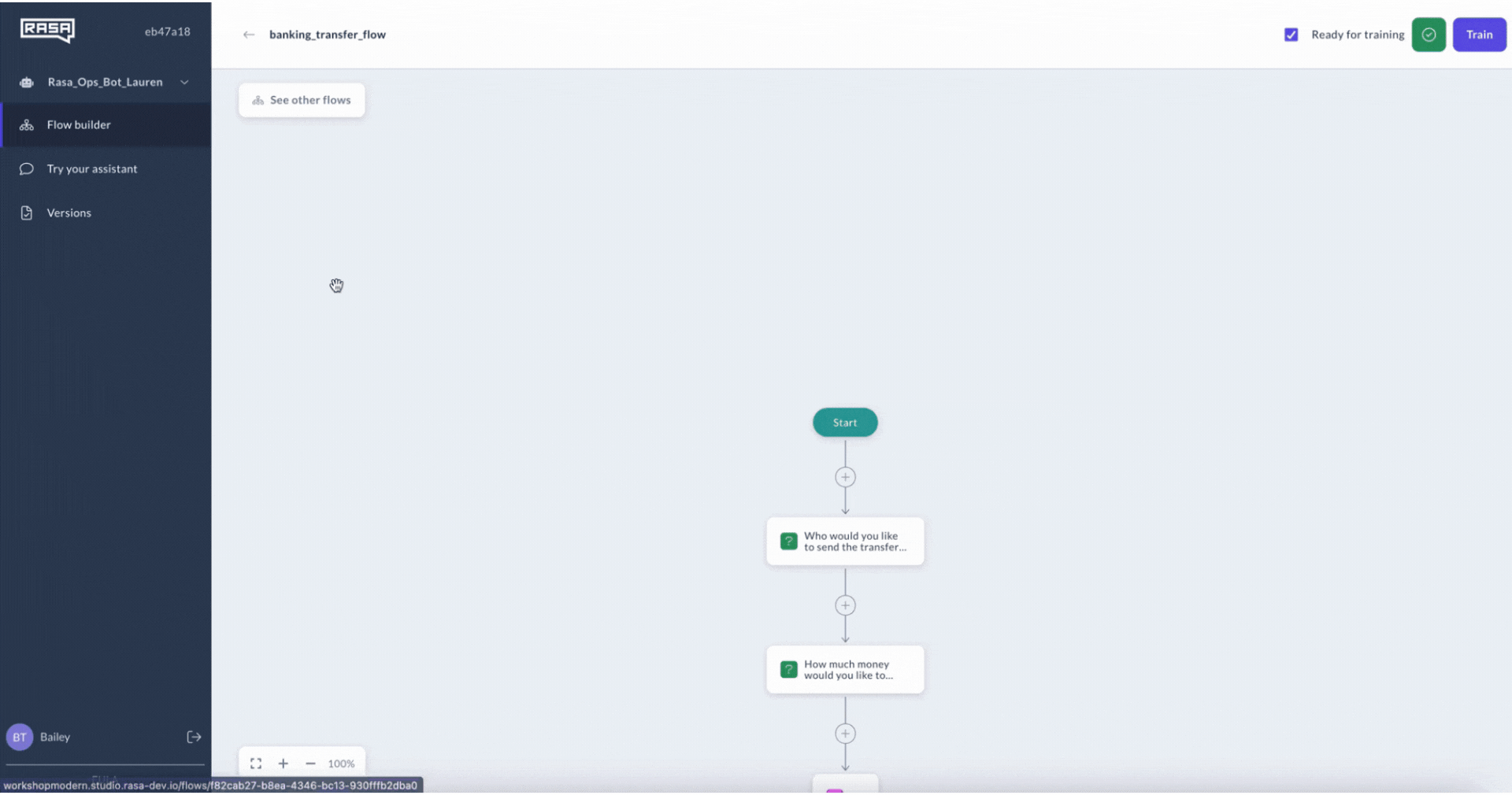
2. Test with our Try Your Assistant Panel
Built a new Flow? Try it out right away in the Rasa Studio interface with our “Try your Assistant Panel.” You can trace the flow of conversation through your AI assistant to demonstrate, test, and debug new developments.
- Benefit for Testers: Until now, implementing AI Assistants with Rasa has required a lot of work directly in code. This, in turn, required debugging and testing in the command line. We brought the Rasa test feature into Rasa Studio so anyone building dialogue in the UI can quickly test, debug, and share what they have built.
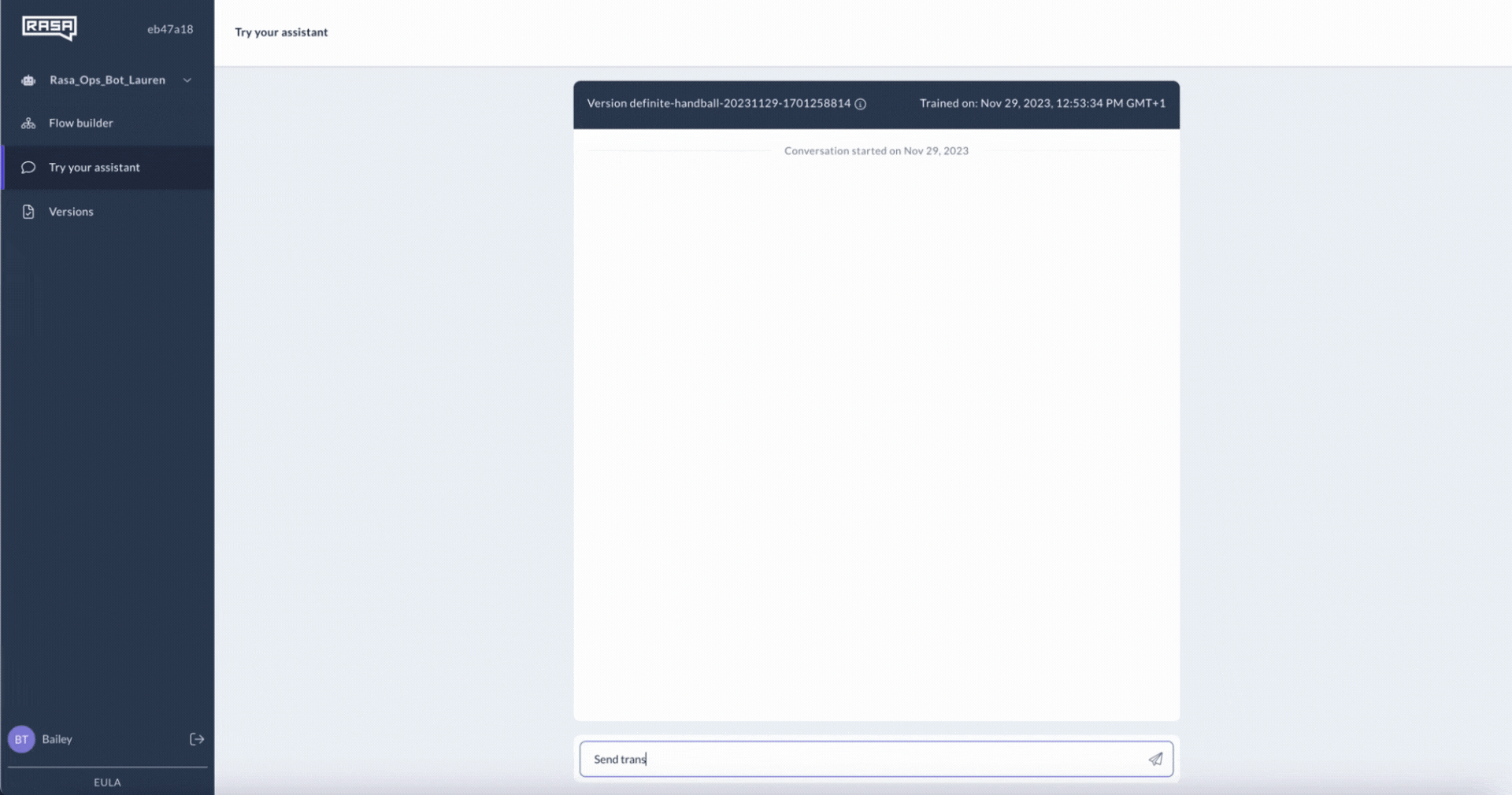
3. Review with our Annotation Dashboard
Bring Conversation Driven Development (CDD) to life with our built-in annotation dashboard. The dashboard is purpose-built to enable collaborative annotation, empowering lead annotators to review team annotations and improve the NLU model if in use. Filter and identify key conversations for review and assess the accuracy of your AI assistant.
- Benefit for Annotation Teams: As a part of CDD, we know it’s essential to listen to your users and use those insights to continuously improve your AI Assistant. Annotation and analyst teams reviewing user conversations can say goodbye to disparate Excel documents and centralize this annotation workflow in Rasa Studio. This enables optimal data distribution and a streamlined insights collection process.
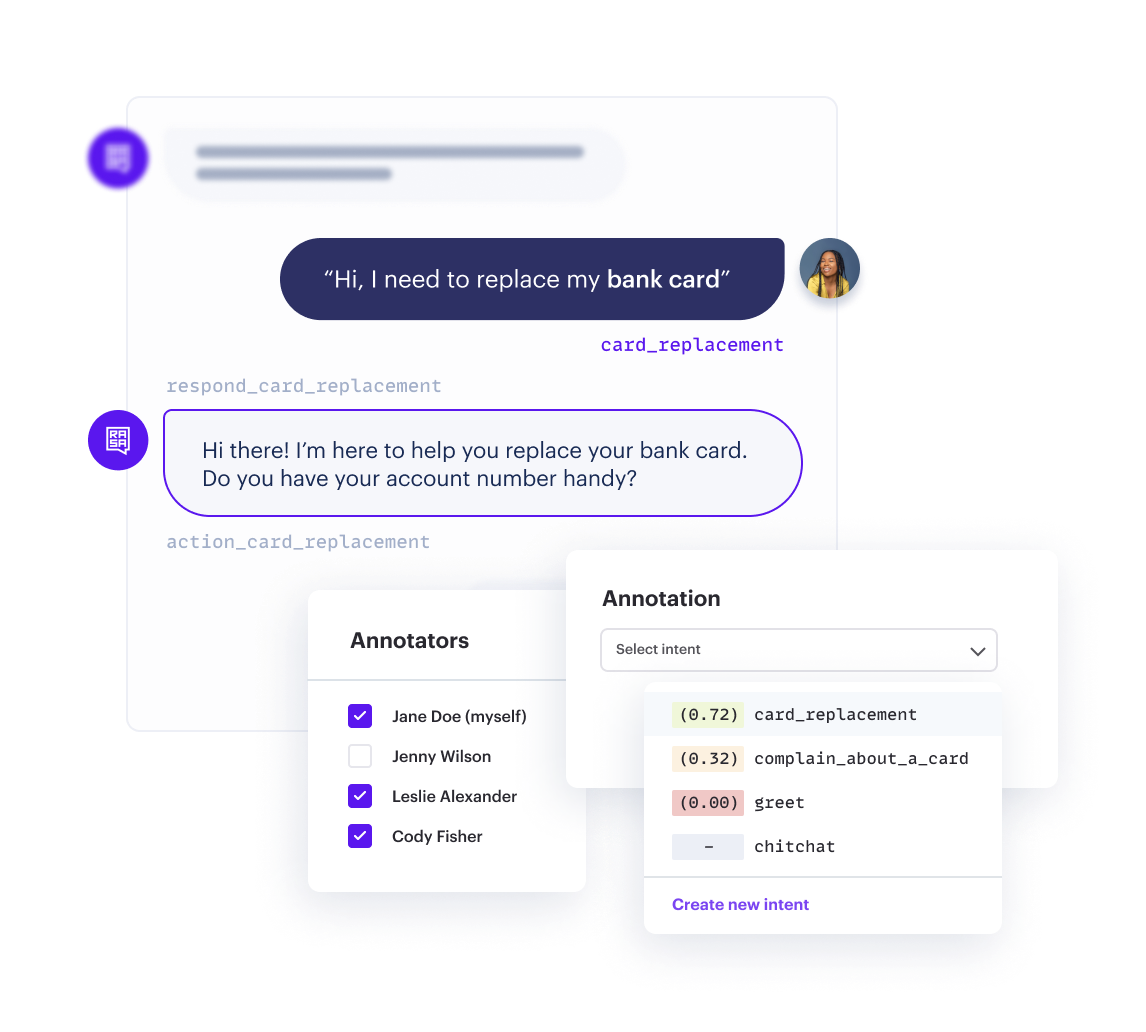
4. Optimize with our Content Management System (CMS)
The integrated content management system in Rasa Studio lets you curate your AI assistant training data without any code to facilitate the implementation of continuous improvements.
- Benefit for Content Teams: We know there are essential subject matter experts, copywriters, legal teams, and others working to improve the content and training data in conversational interfaces. Our content management system puts all the content in one place so content managers can edit and update independently.
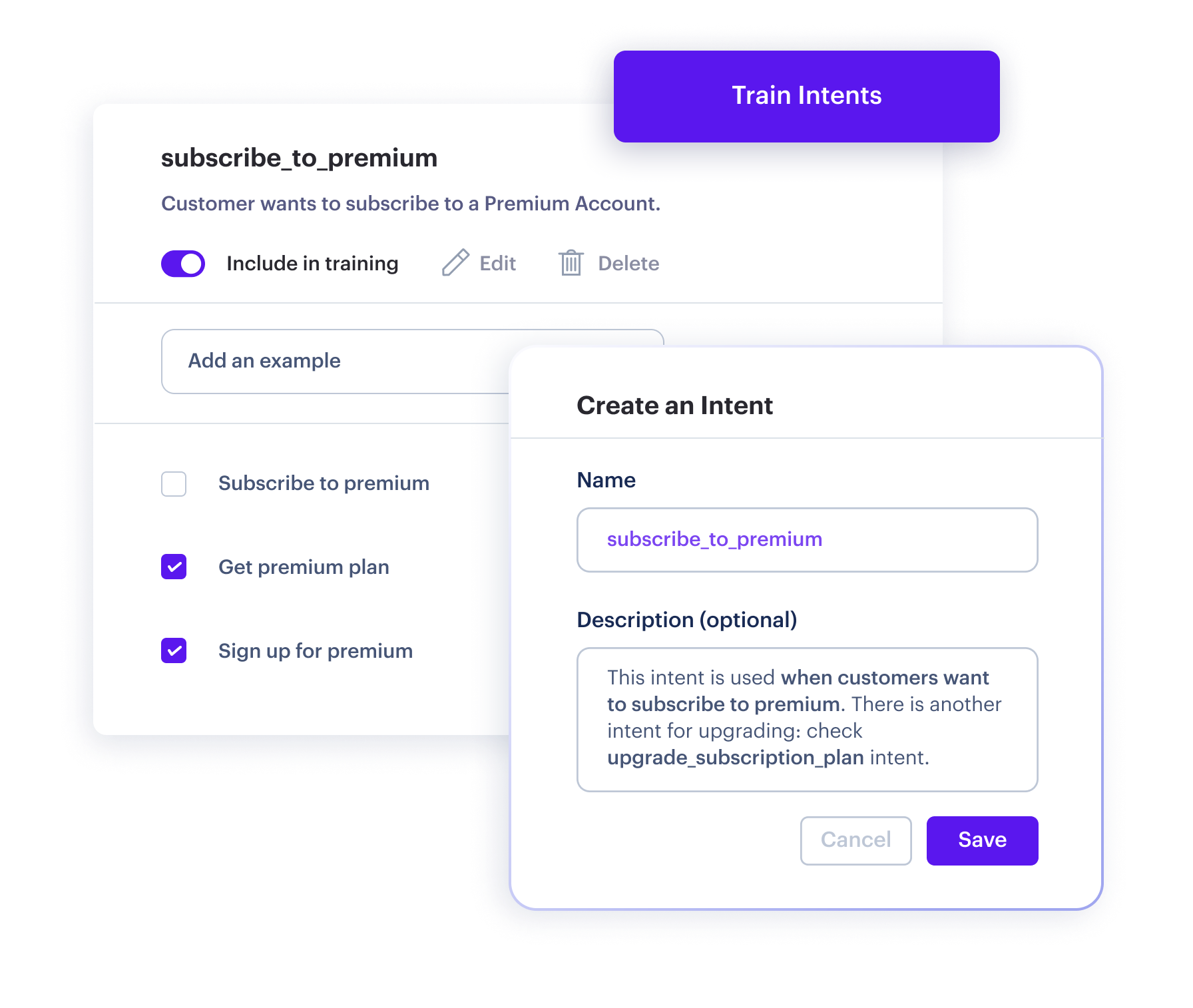
5. Publish with our model training service
Publish changes and updates to your models directly in the UI so you can make continuous changes and test new versions of your AI Assistant.
- Benefit for Implementation Teams: With our model training service, no-code implementers can be self-sufficient. Not only can Flows be built in Rasa Studio, but also published for testing. When you’re ready to test what you built, just activate the flows you want to be included. Press “Train” to publish your changes and try a new version of the AI Assistant.
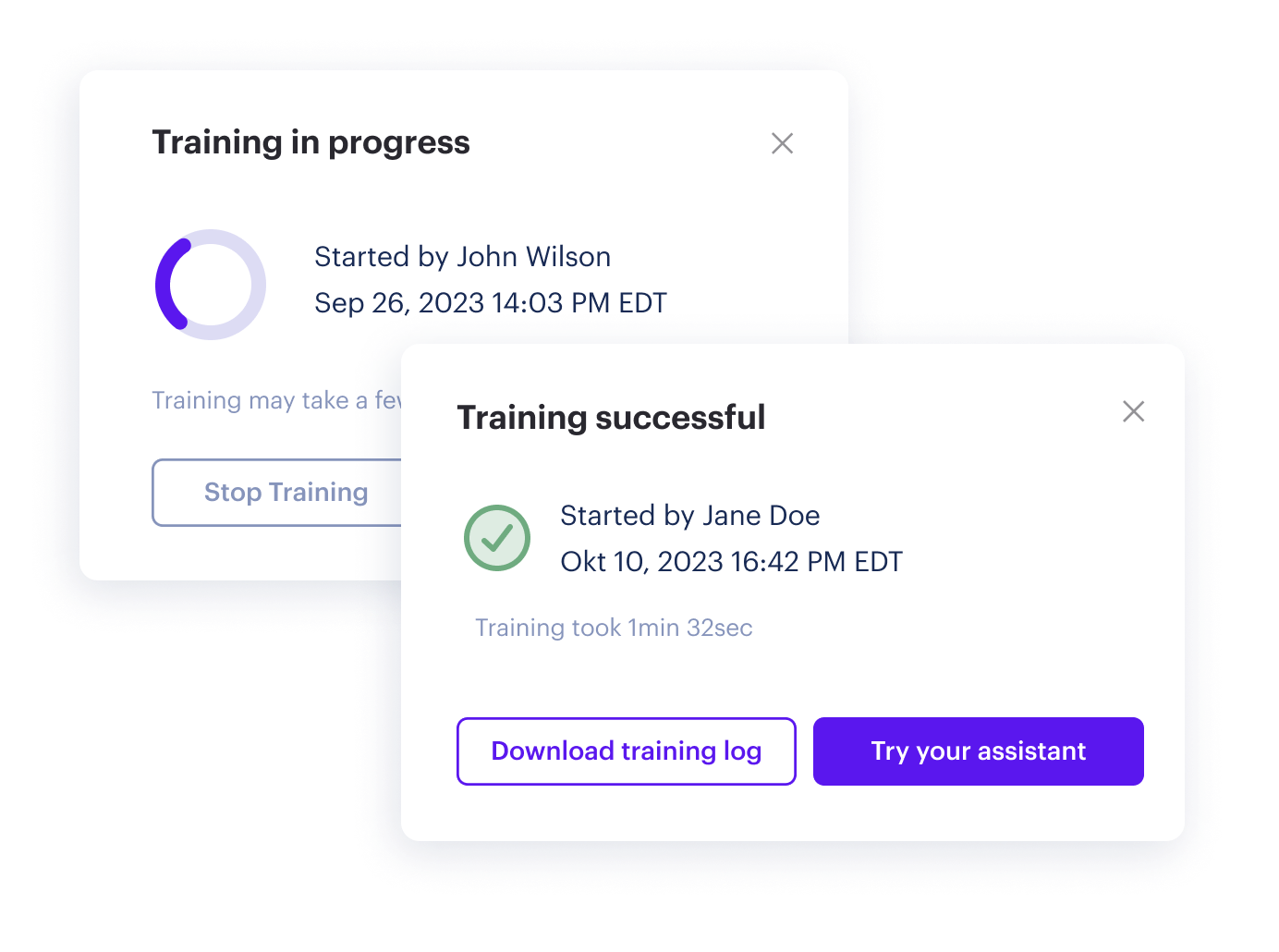
With the introduction of Rasa Studio, we look forward to the new and exciting ways we are facilitating cross-team collaboration. Whether you prefer a UI’s ease of use or the extensibility of our pro-code framework, we want to empower the whole team to build better conversational interfaces.
Want to learn more about Rasa Studio and how you can get access to our new UI? Talk with Sales.
